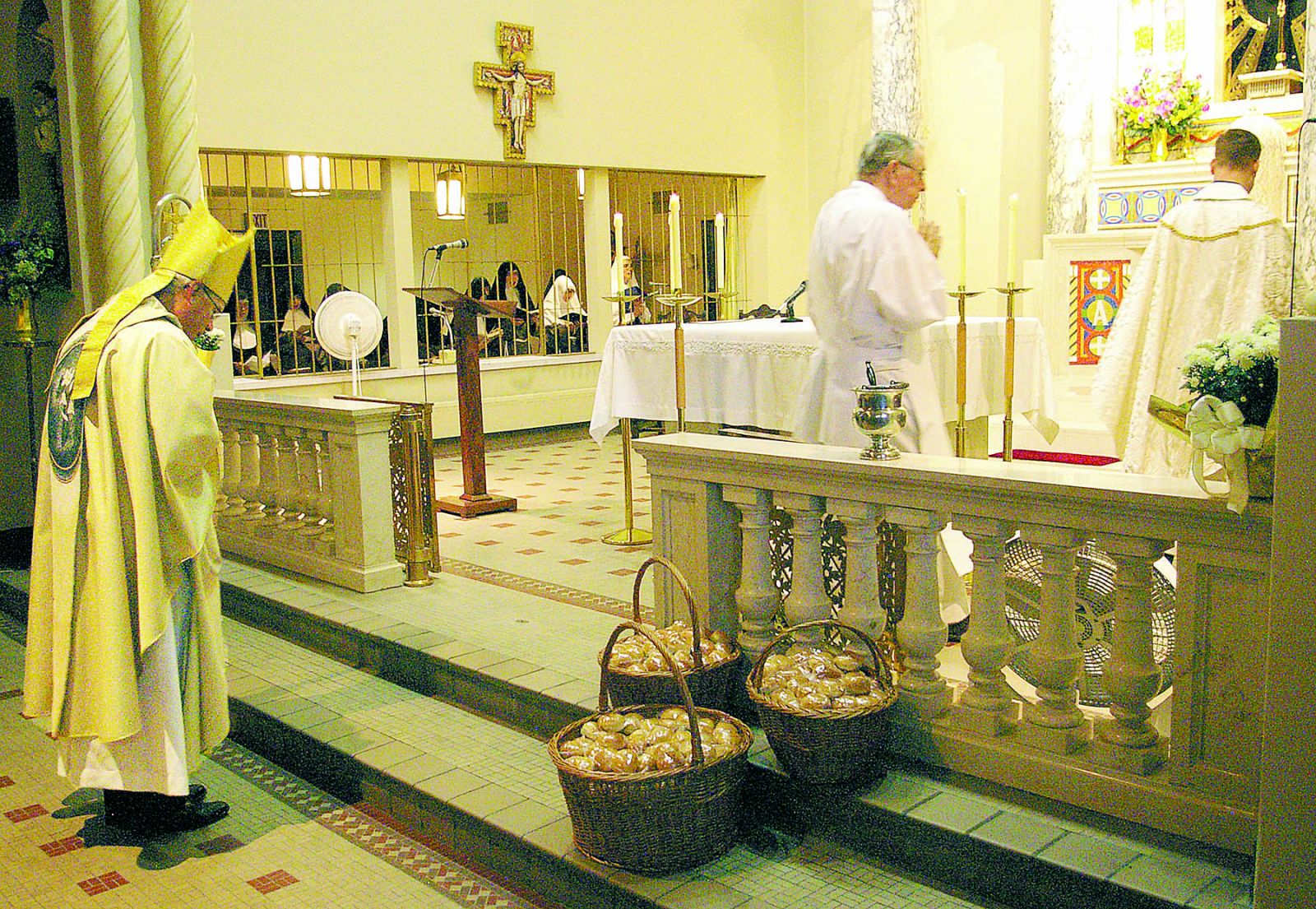
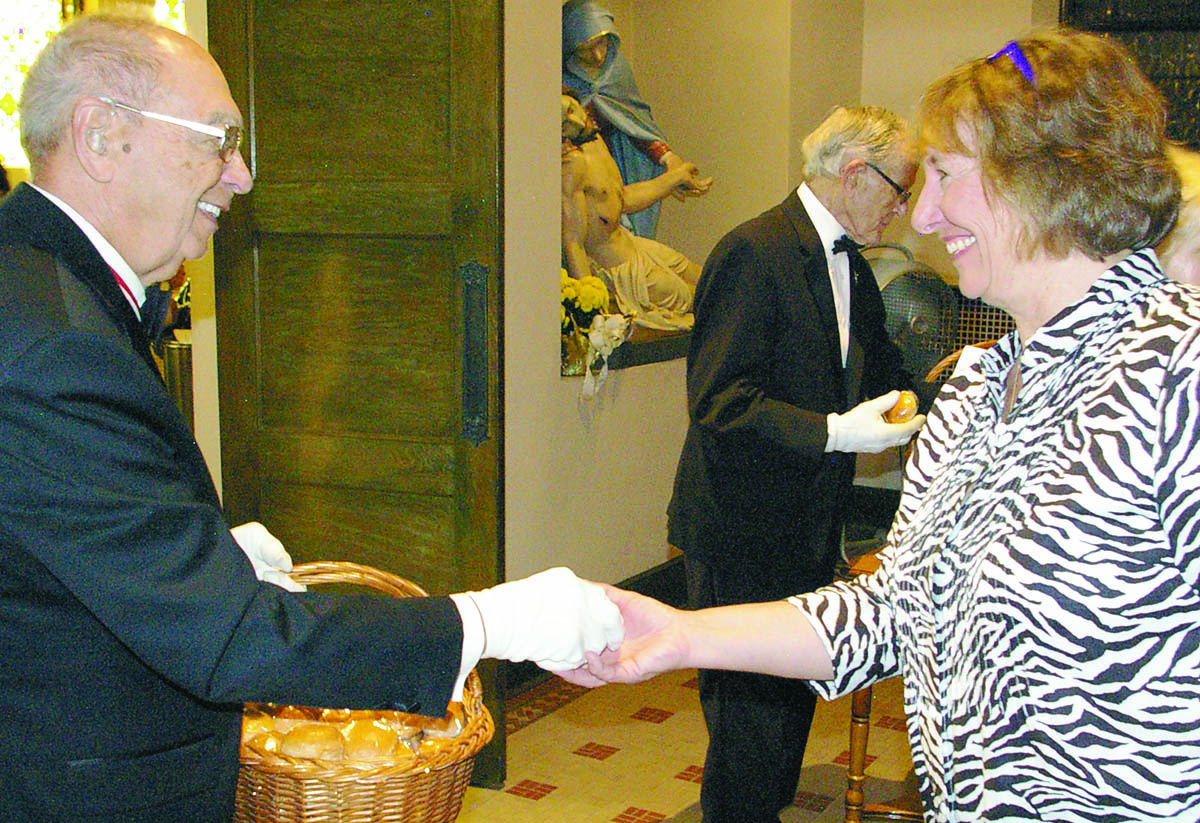
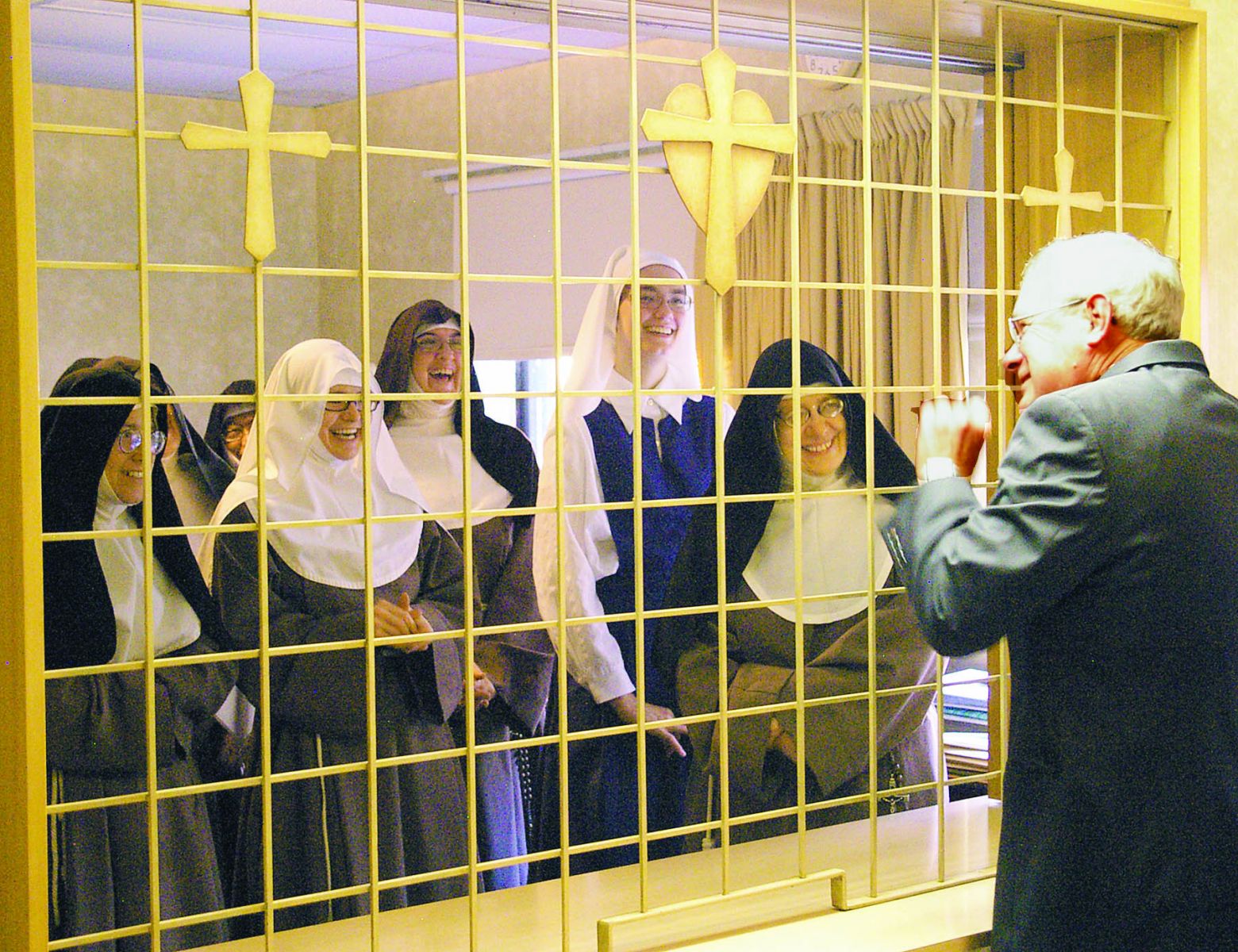
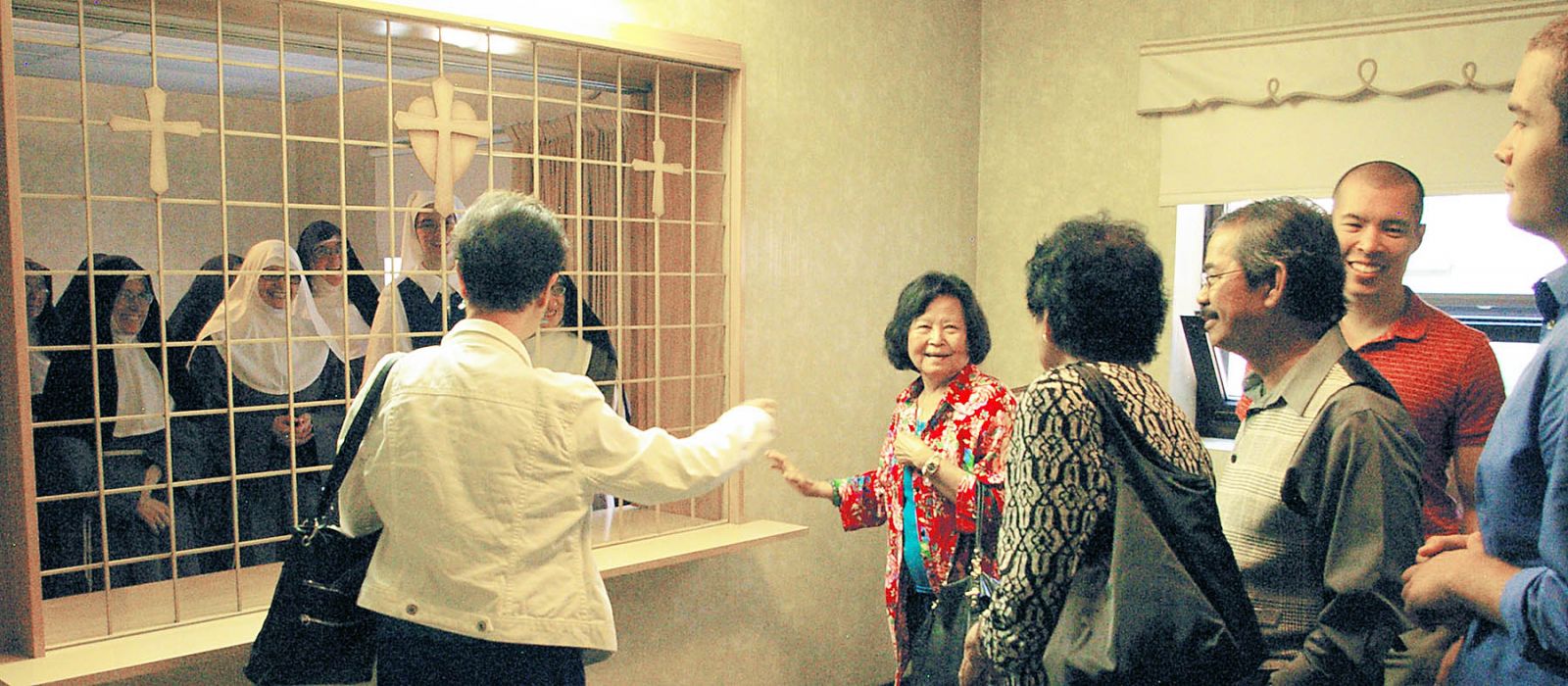
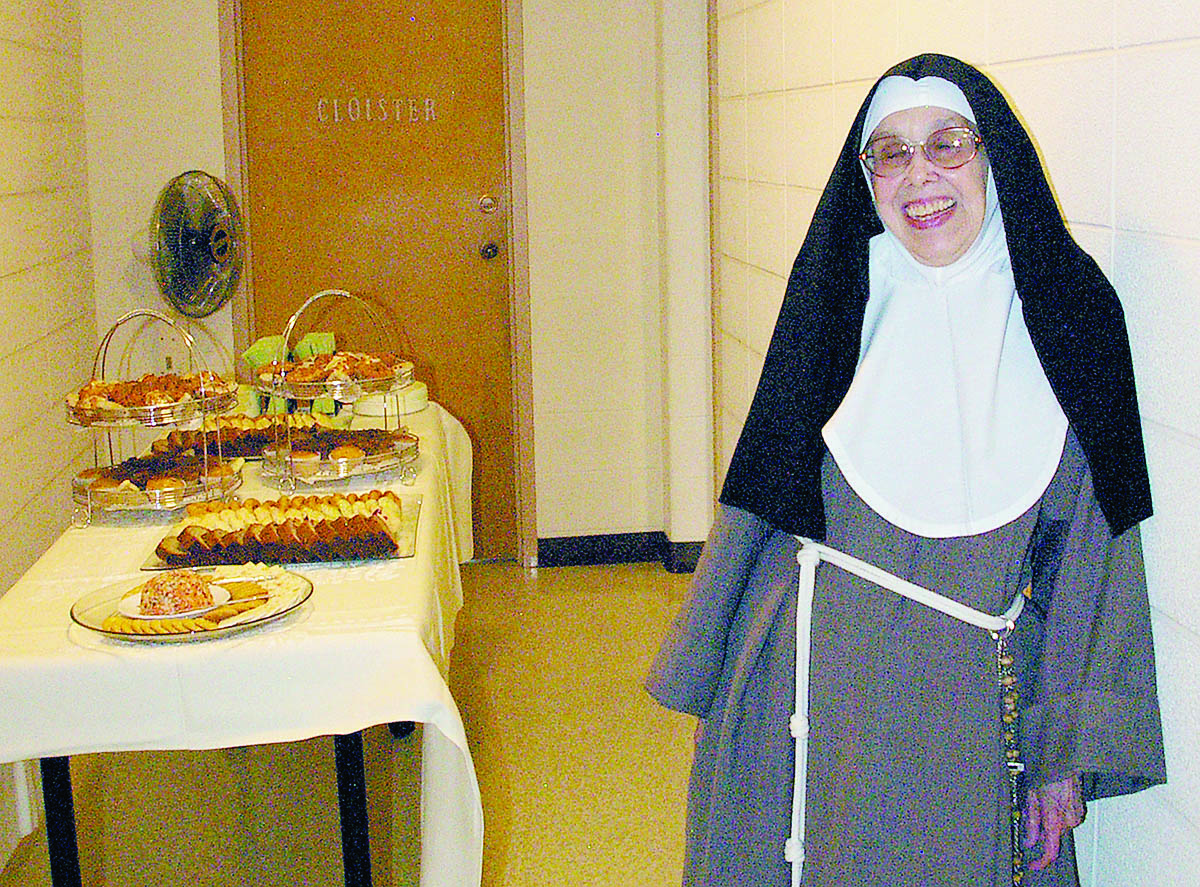
ROCKFORD—The Aug. 11 Mass at the Poor Clare Colettines Monastery chapel was being celebrated “not just in memory, but in the reality of St. Clare,” Bishop David Malloy said.
He congratulated “the daughters of Clare living among us” for their fidelity to the rule of life that Clare wrote 761 years ago.
He called that rule and that life “not just a memory … it is a living part of our faith itself.”
Those daughters of Clare, Bishop Malloy said, “share in the spiritual glow” of St. Francis and St. Clare. The connection between the two saints, he said, “was a unique sharing of the gift of grace.”
He called on one of Clare’s biographers as he spoke of how St. Francis “began to give her a very different view of her (affluent) life … Francis and Clare would see the world differently (and) we can’t talk about Clare without talking about poverty.”
That holy, joyful poverty, he quoted, should be taken “not as a reproach, but as a warning” that points out the worldly temptation to believe that wealth “is of our own doing, of our own making” instead of what it is in reality: a gift from God to be used in unattached freedom to live justly, in service to the poor.
The Poor Clare nuns’ example of prayer, joy and simplicity helps all who are not called “to serve from that side of the bars” by reminding them of the freedom that comes from holy poverty that is usually lost to the world, the bishop said.
His reference to “the bars” referred to the metal grates between the nuns and the outside world as part of their vows of enclosure. They participate at Mass and greet visitors from behind those grates.
Bishop Malloy teased the nuns a bit during his homily, saying it was rather intimidating “to talk about Clare in front of the experts.” Meeting them later in the parlor, he gave them a thumbs-up when they said his choice of a particular St. Clare biographer was the best one to draw from for his homily.
The nuns met also with seminarians Nicholas Sentovich and Robert Blood who both expressed their happiness at having had the opportunity to serve at the Mass and visit the Poor Clares again. For them and others who came for the Mass and to visit, the nuns provided a tableful of breakfast breads and drinks. All also were invited to help themselves from baskets of St. Clare bread, blessed by Bishop Malloy right after the Mass.














